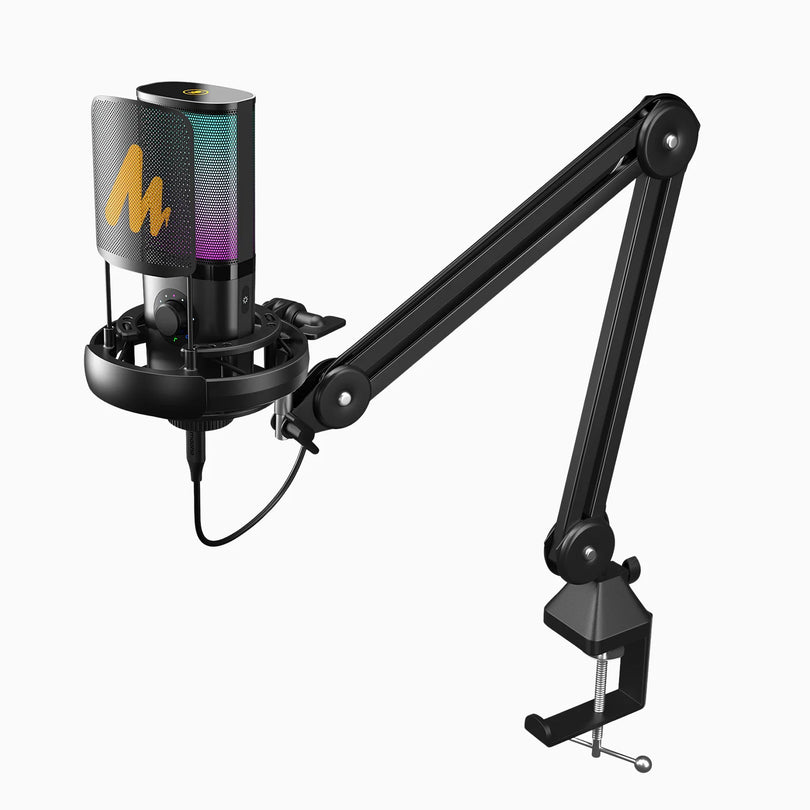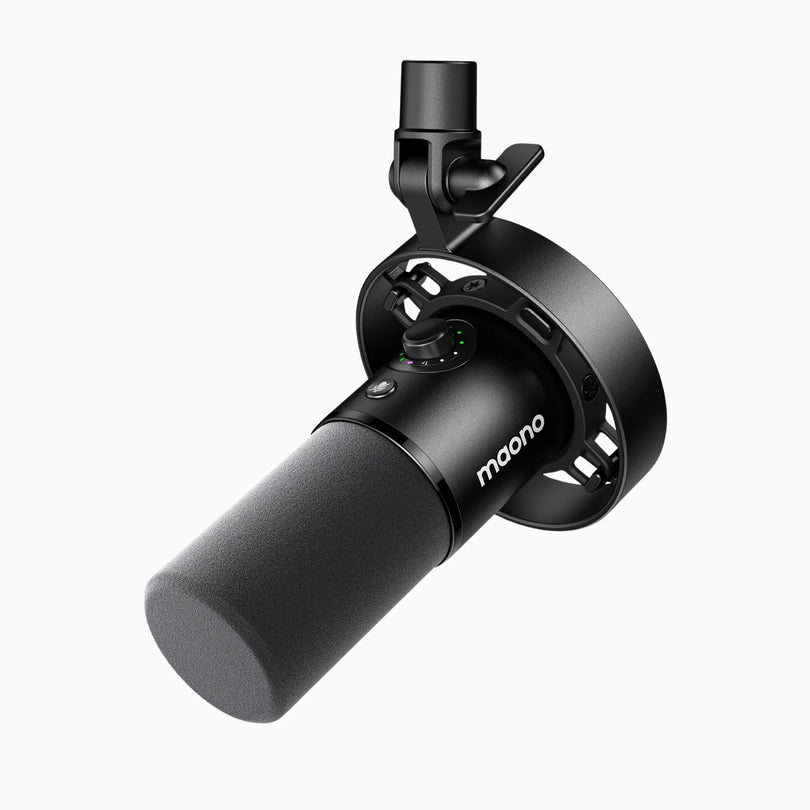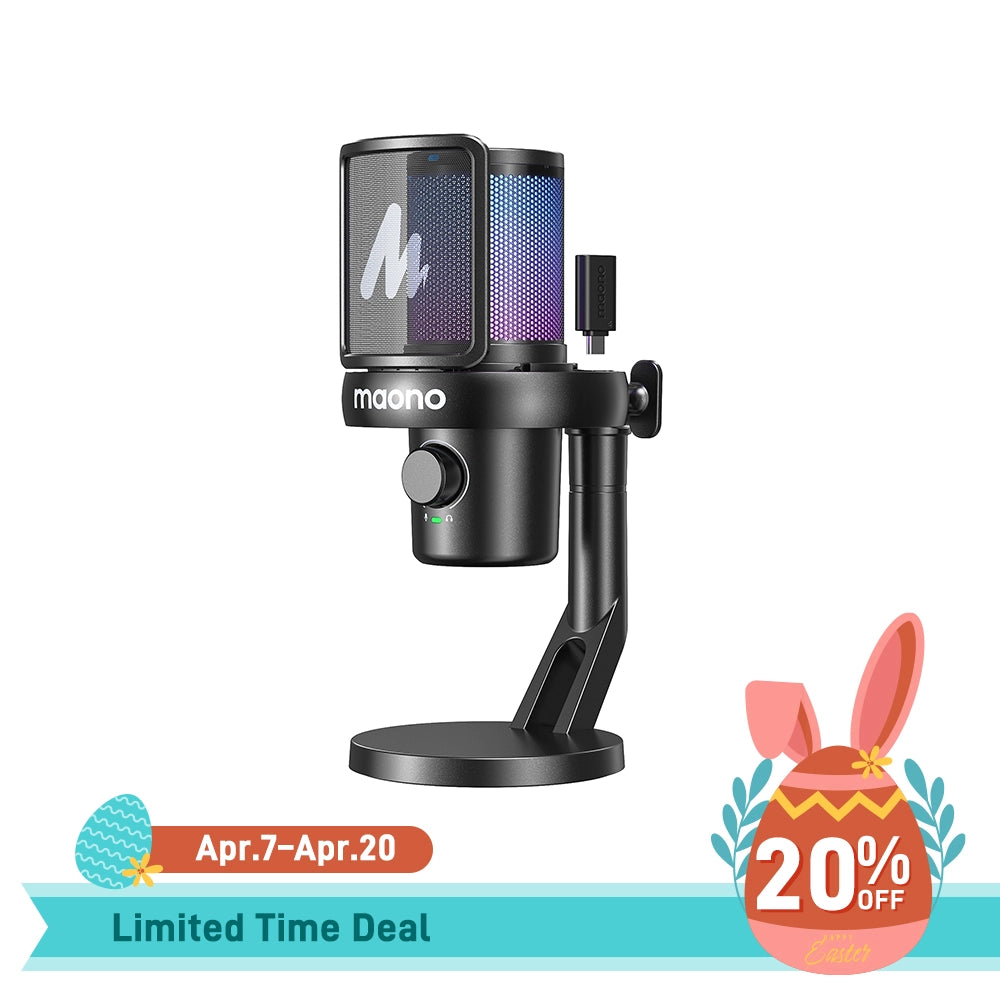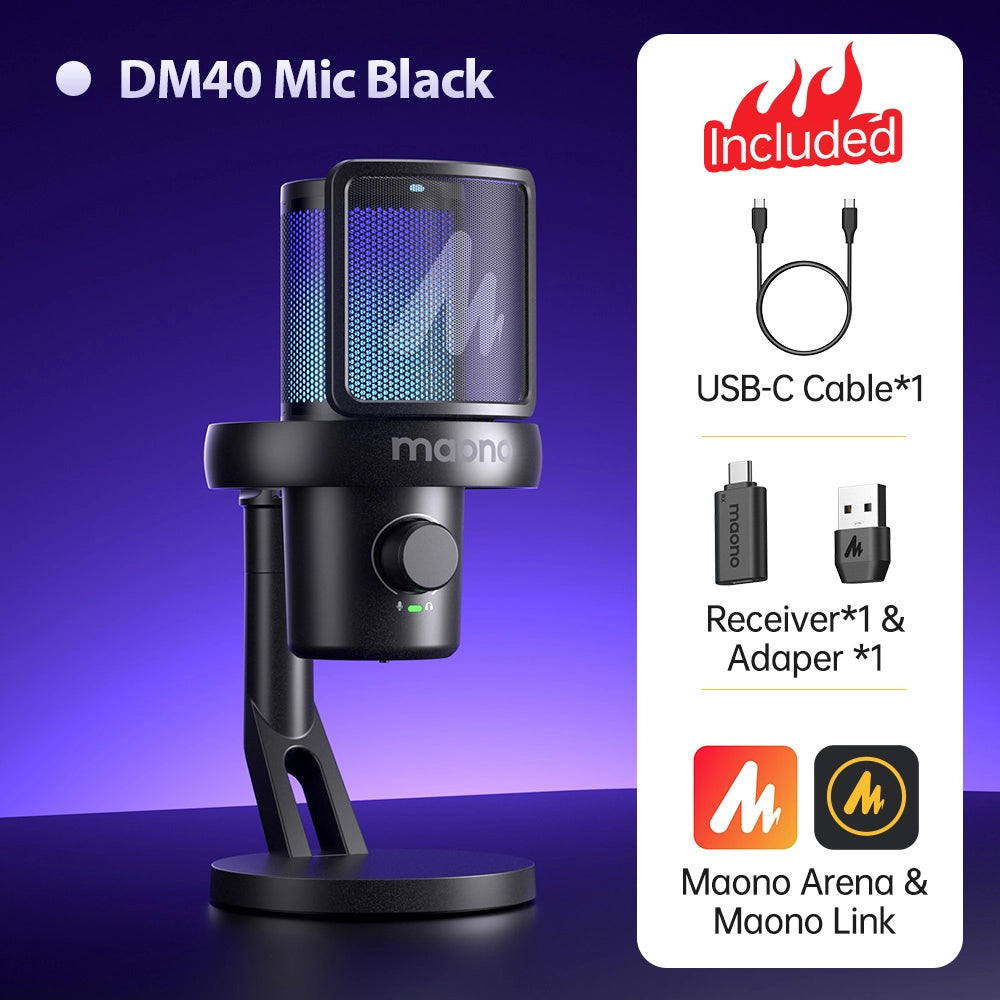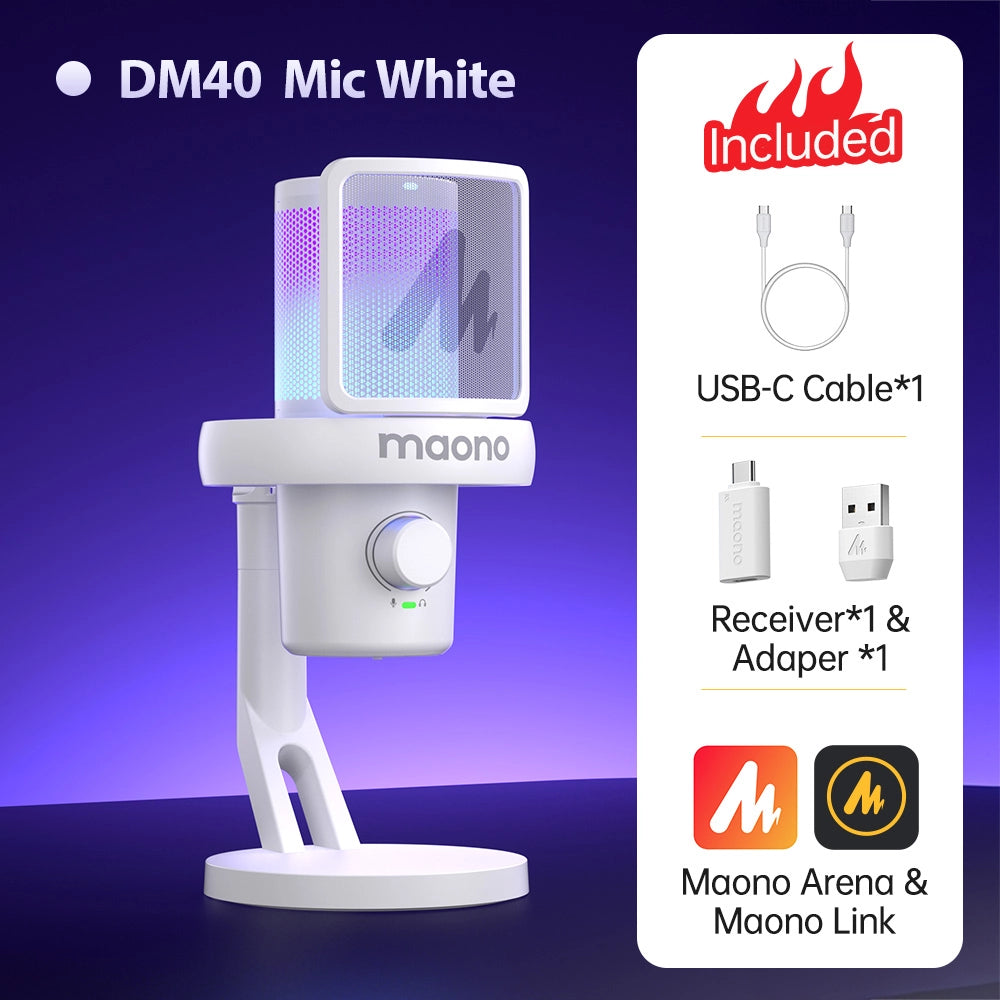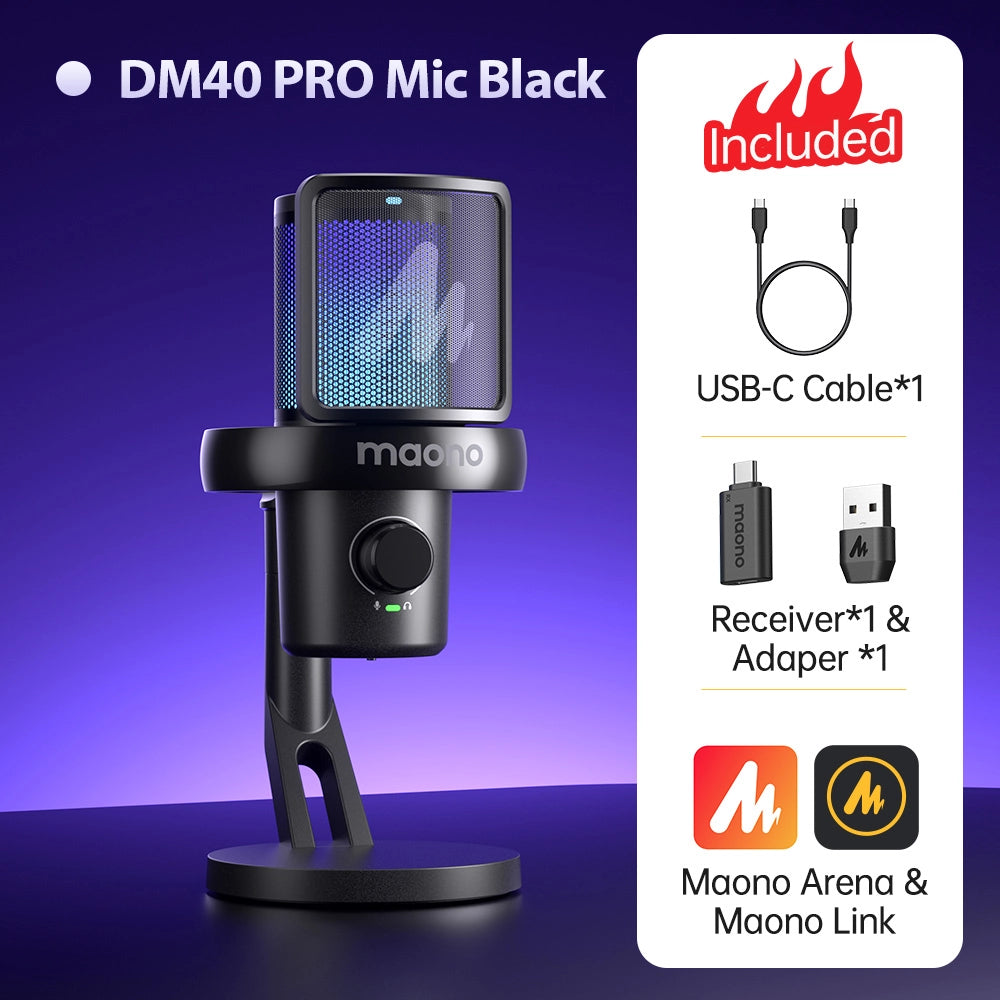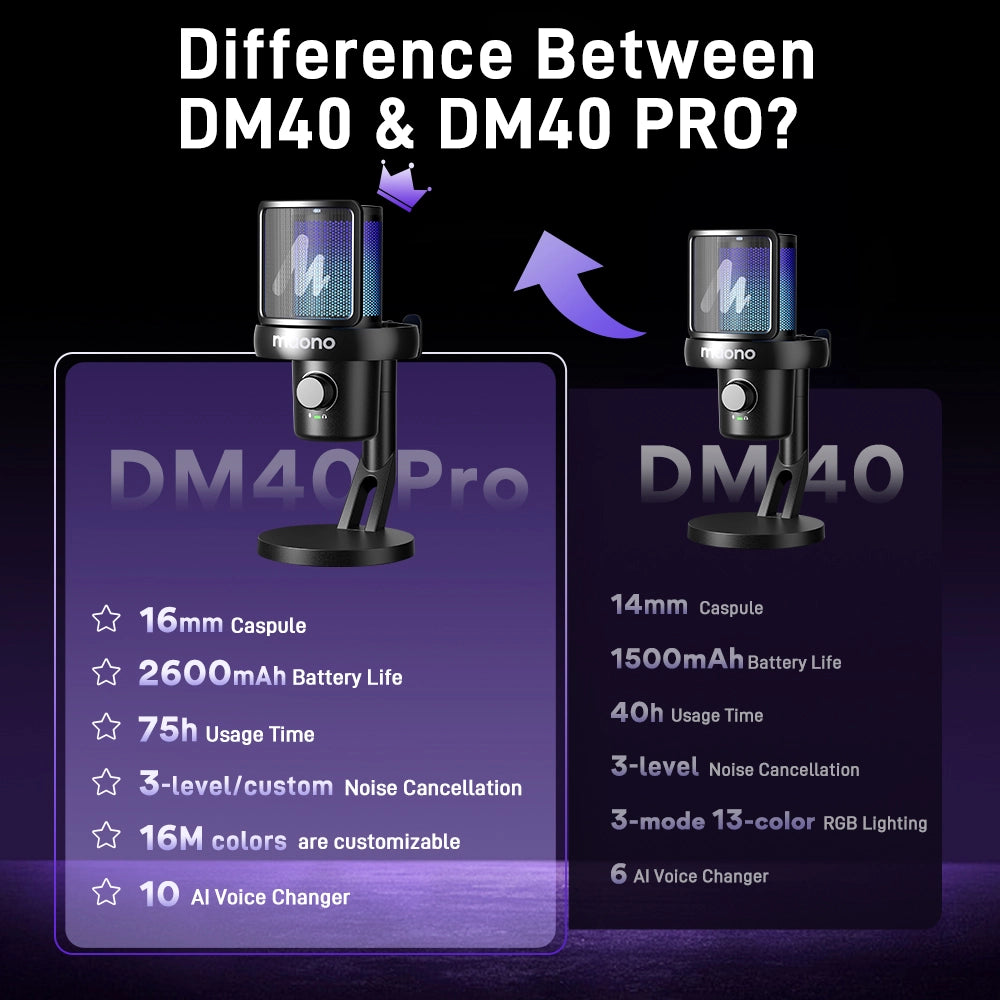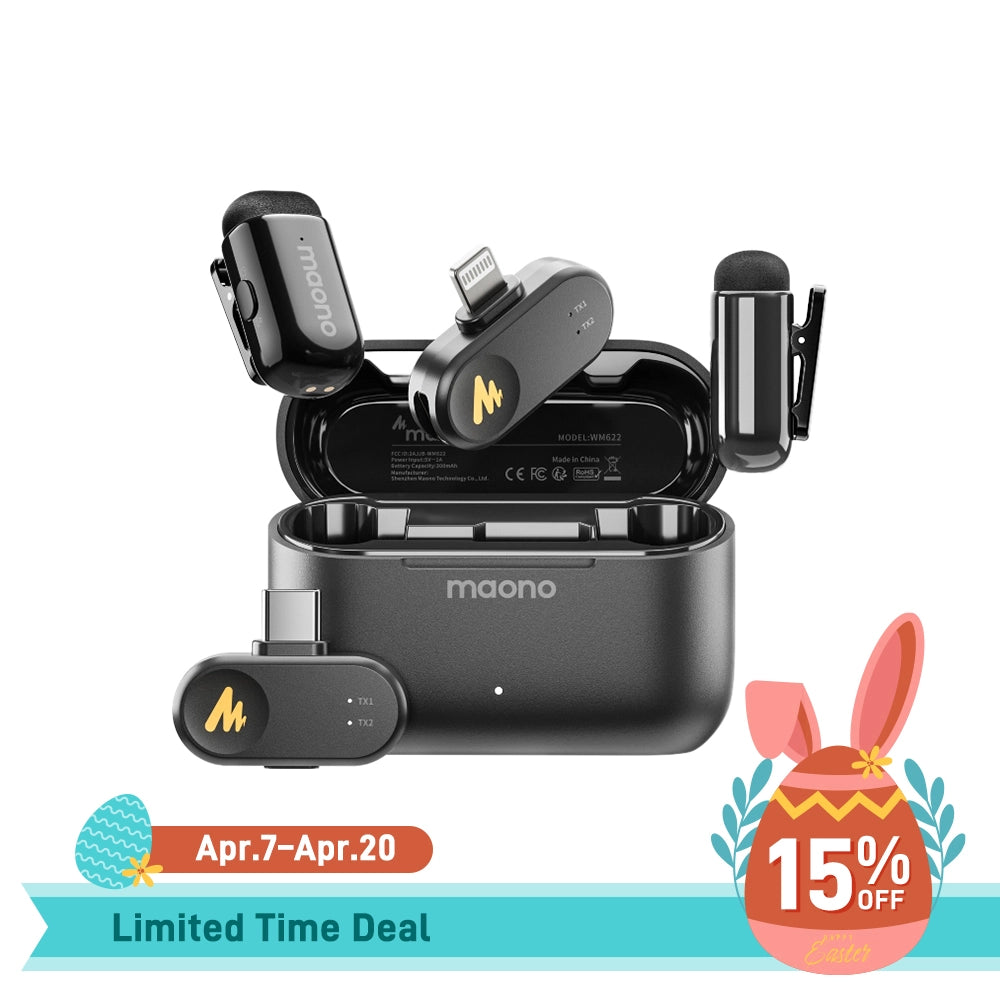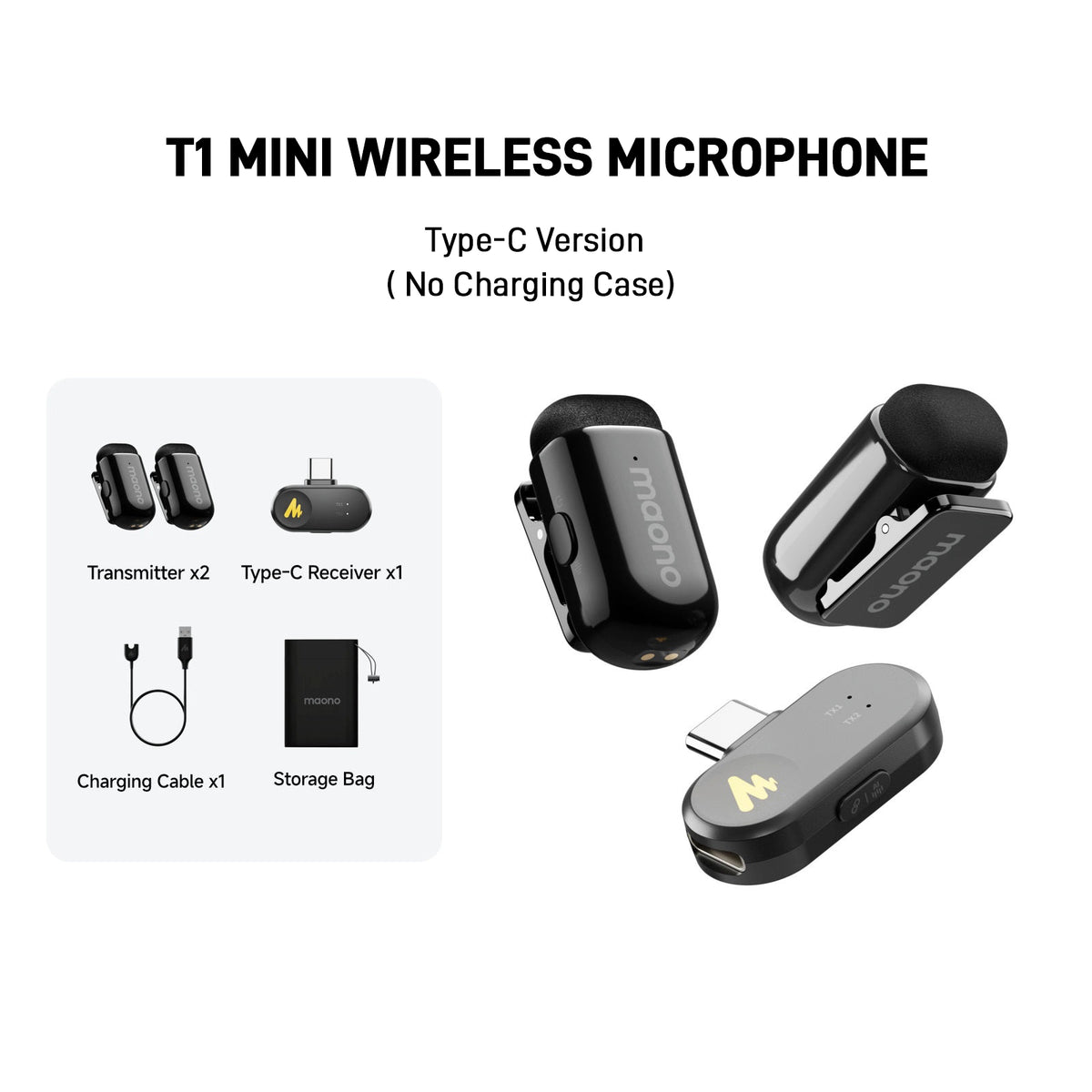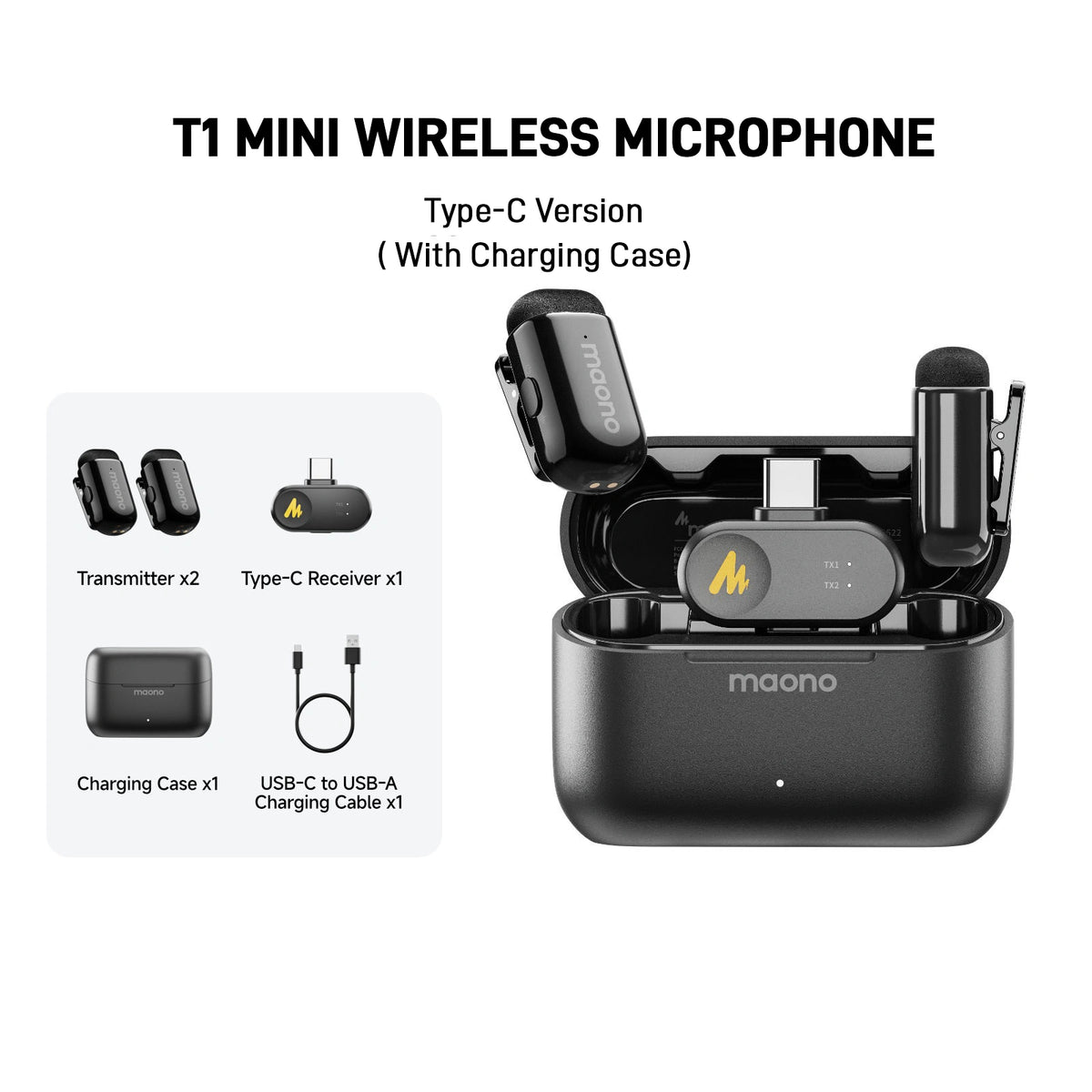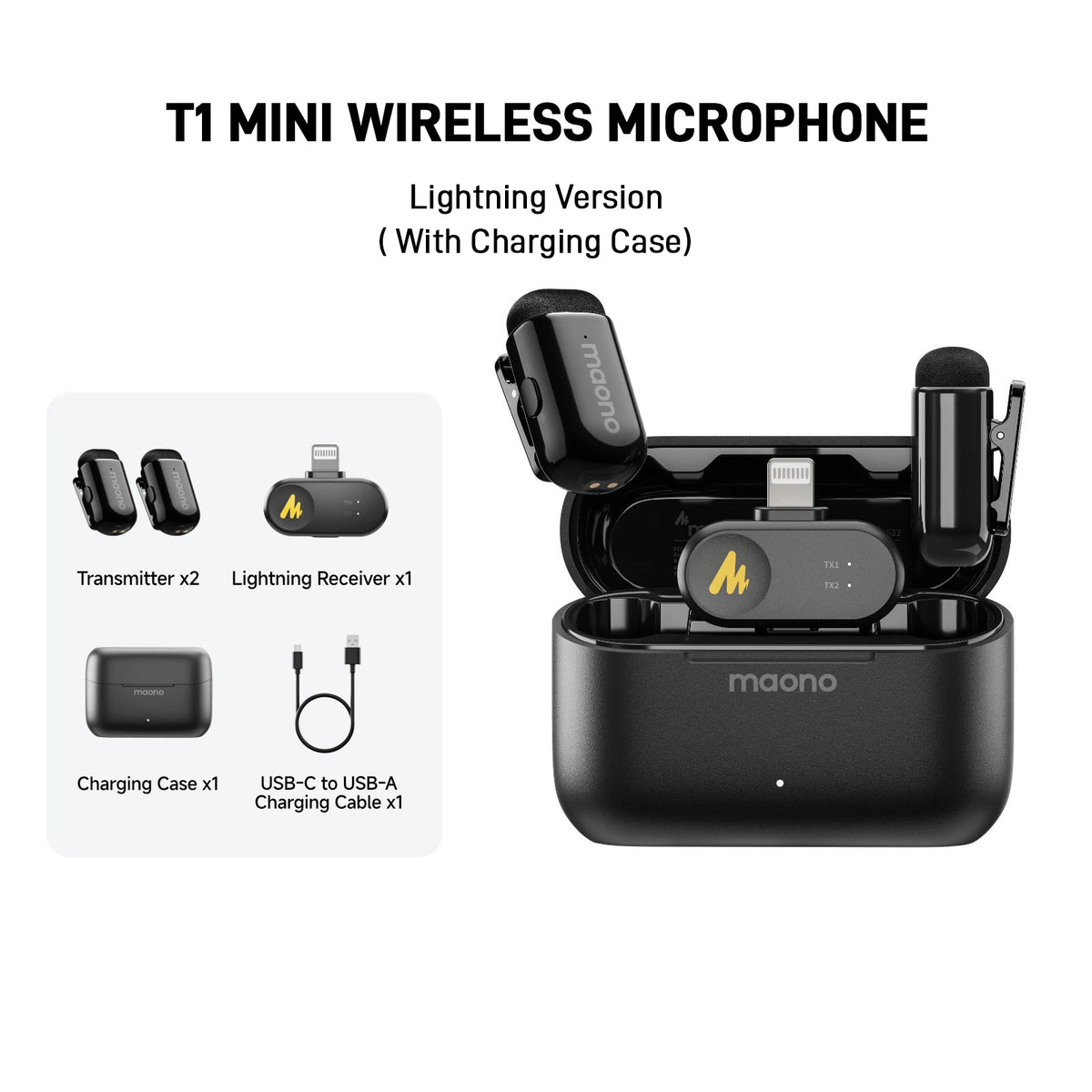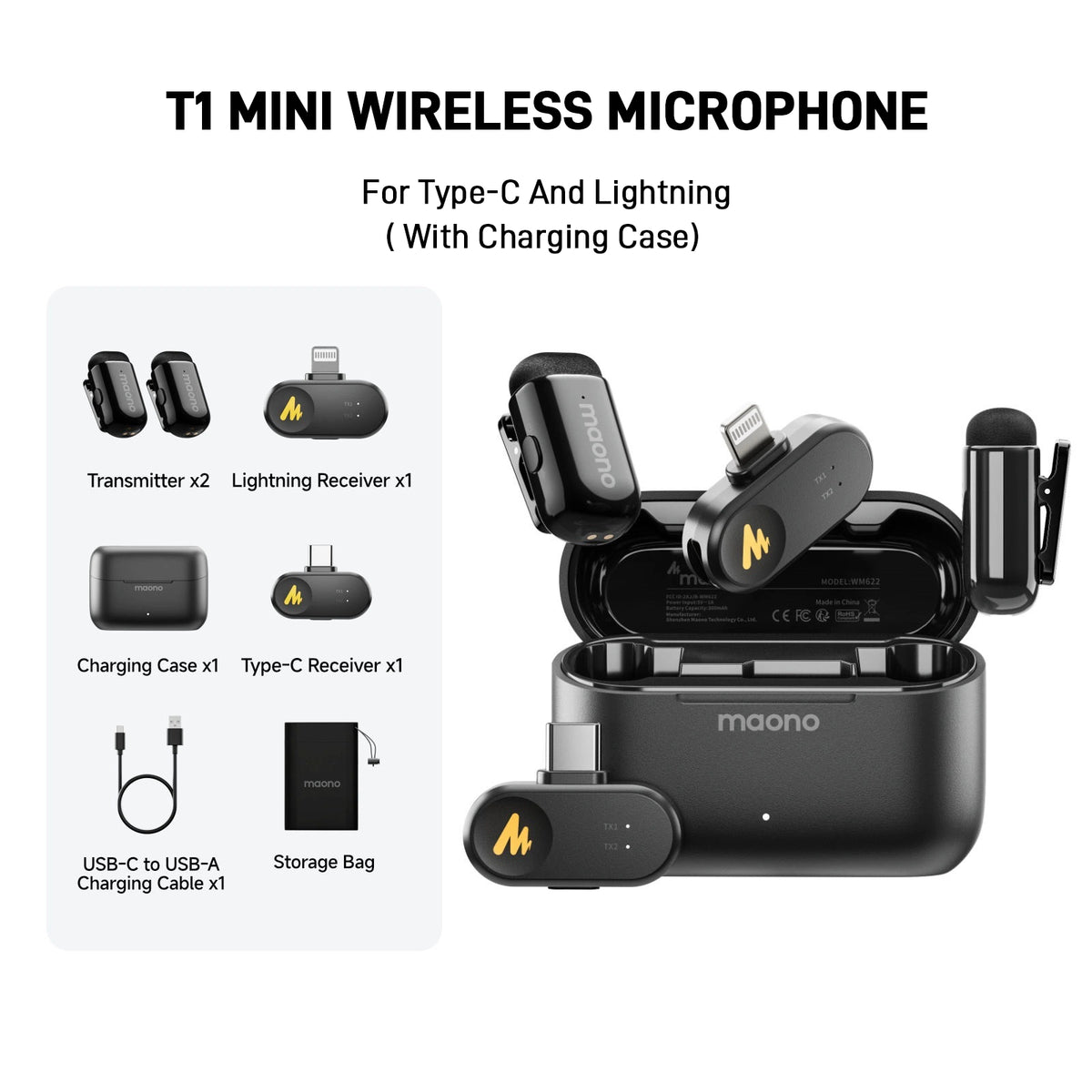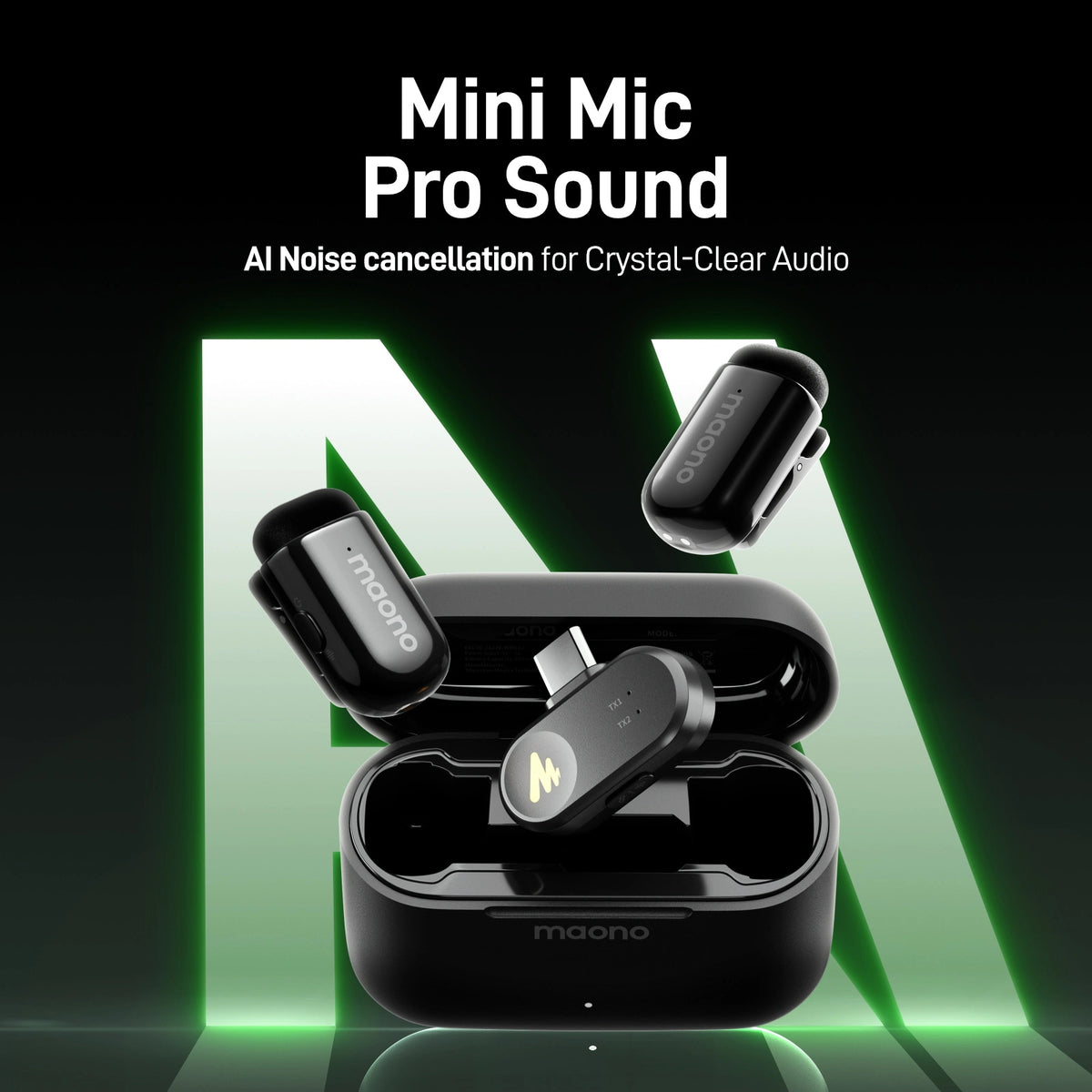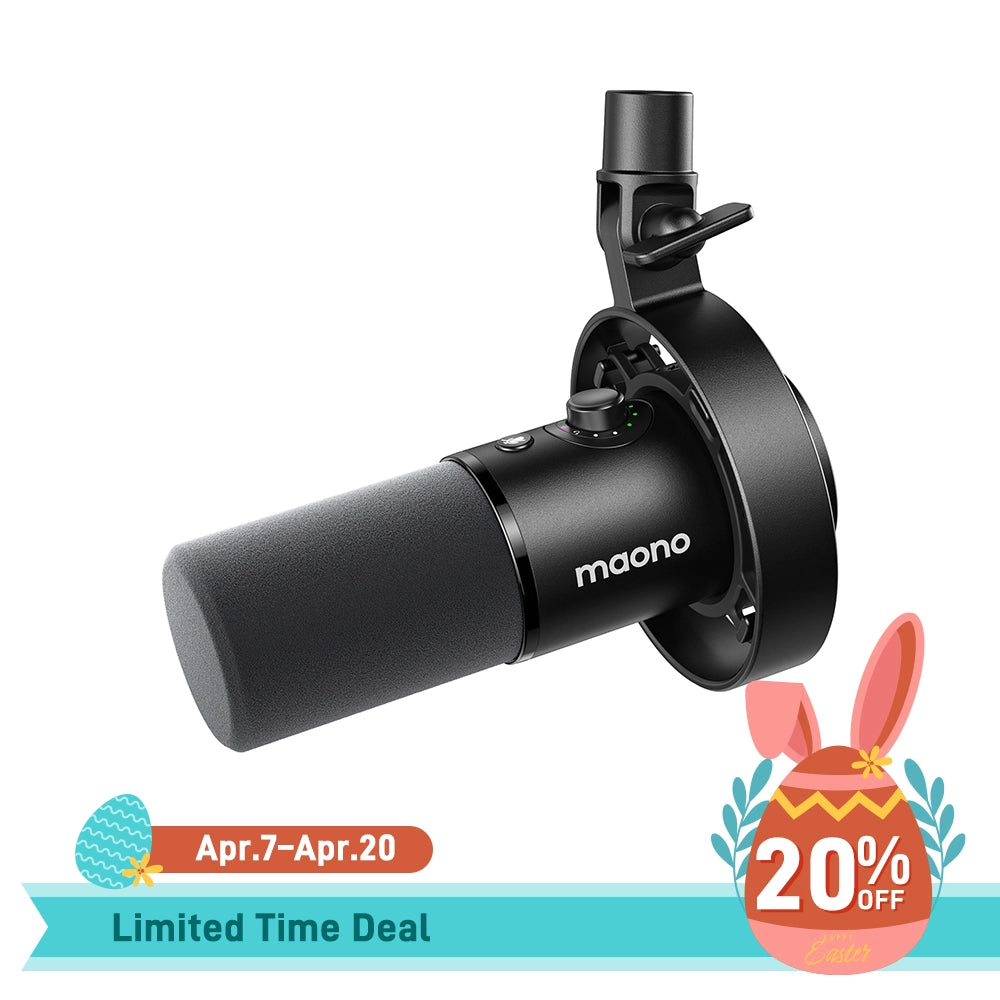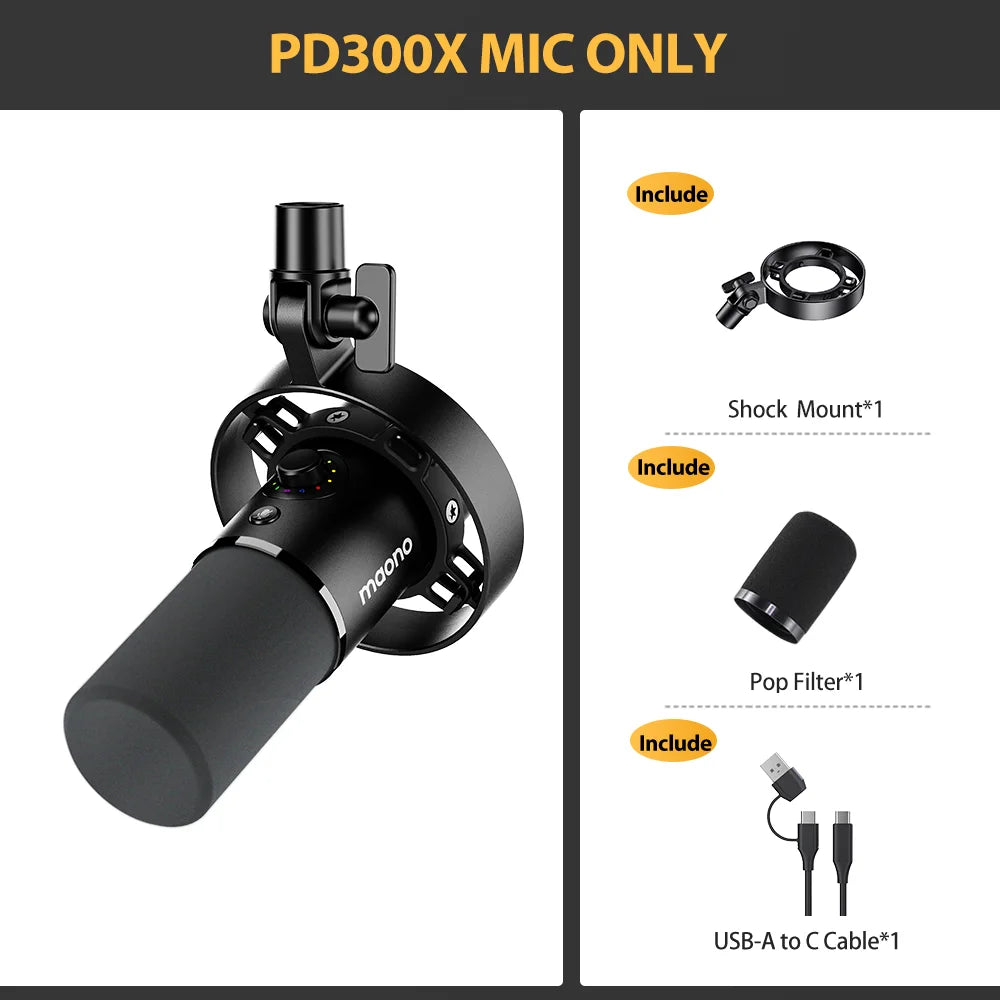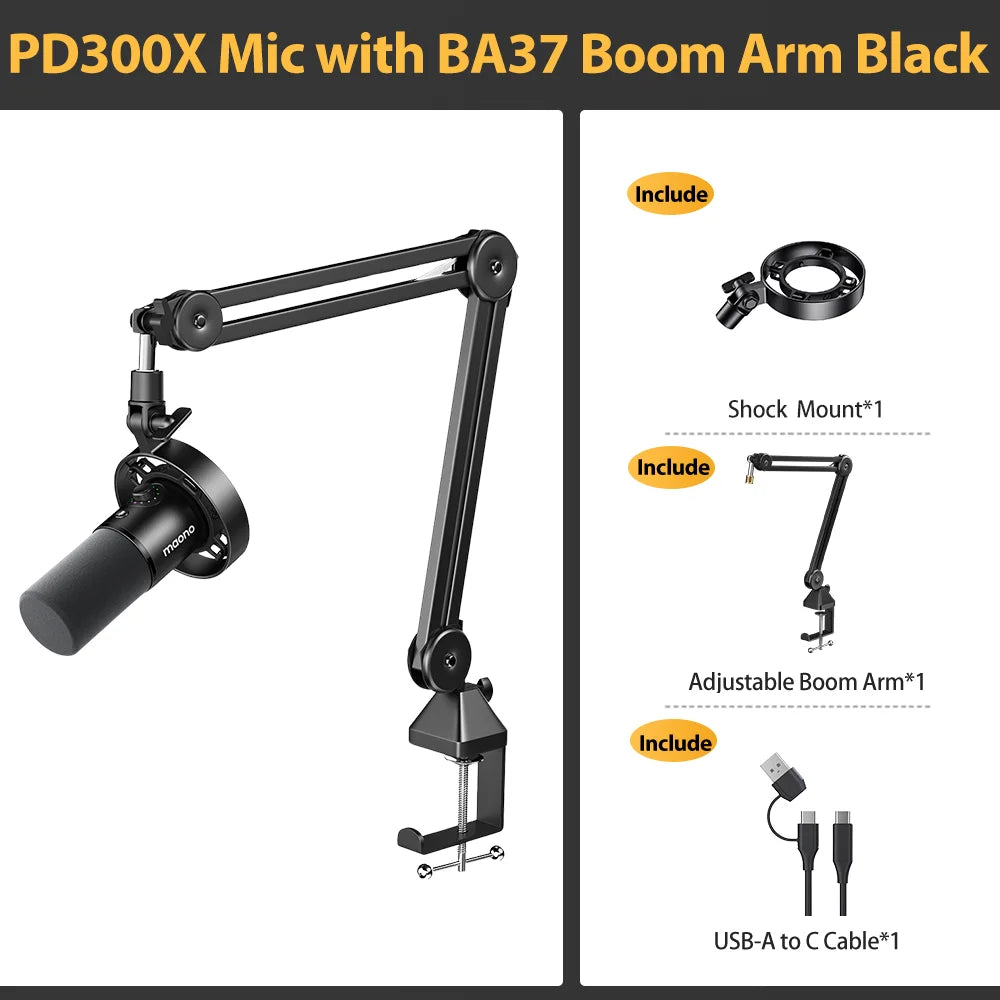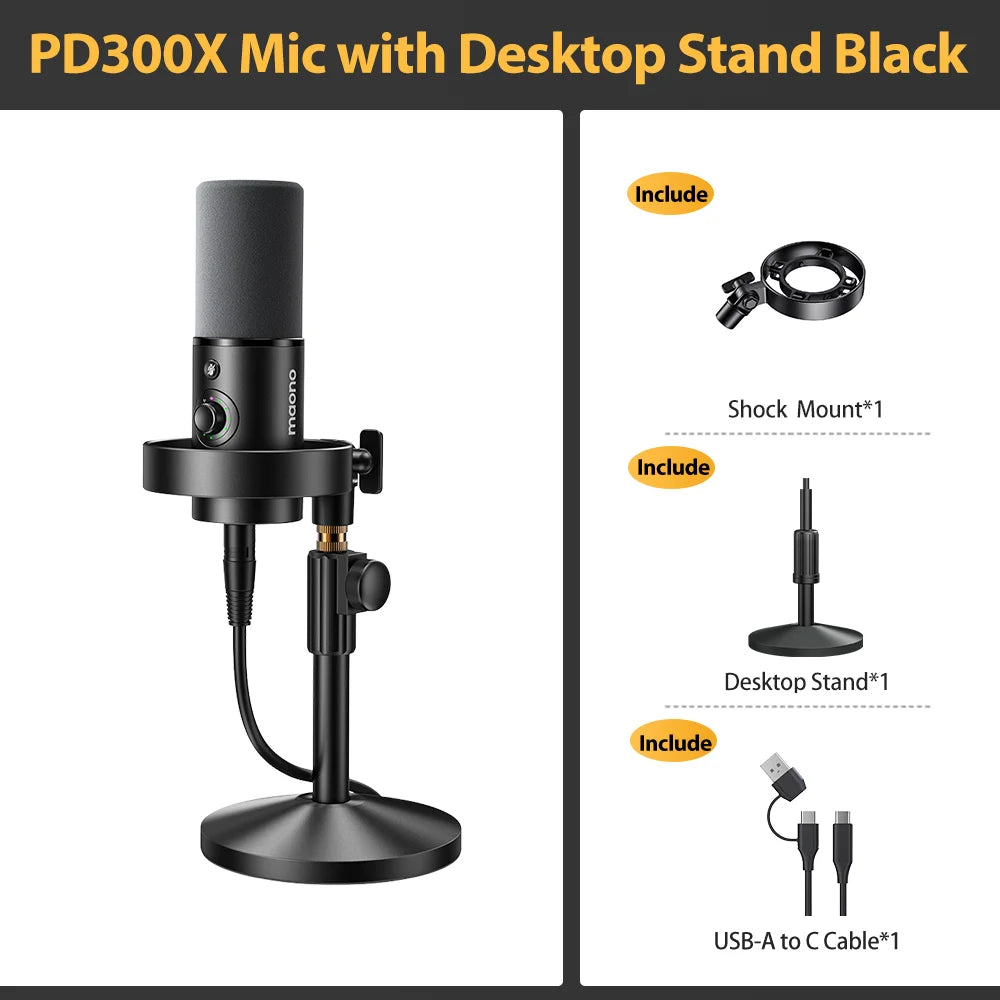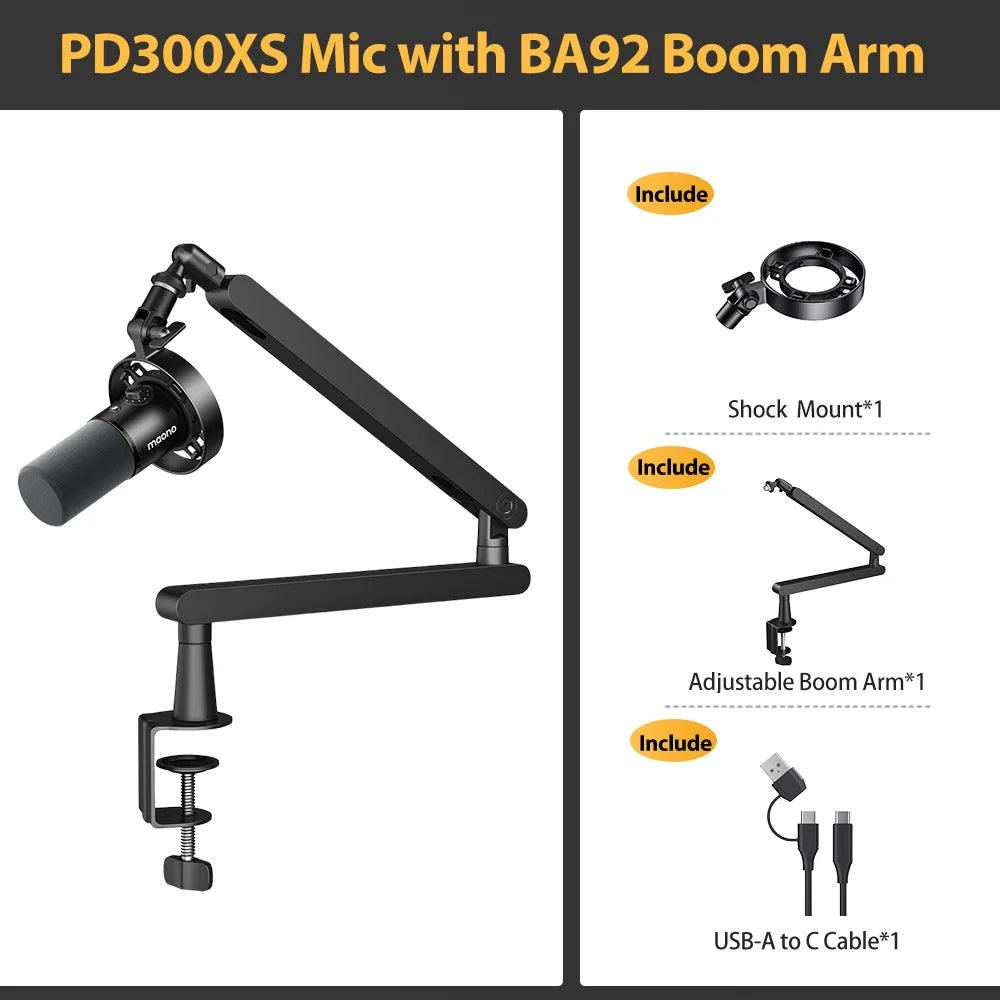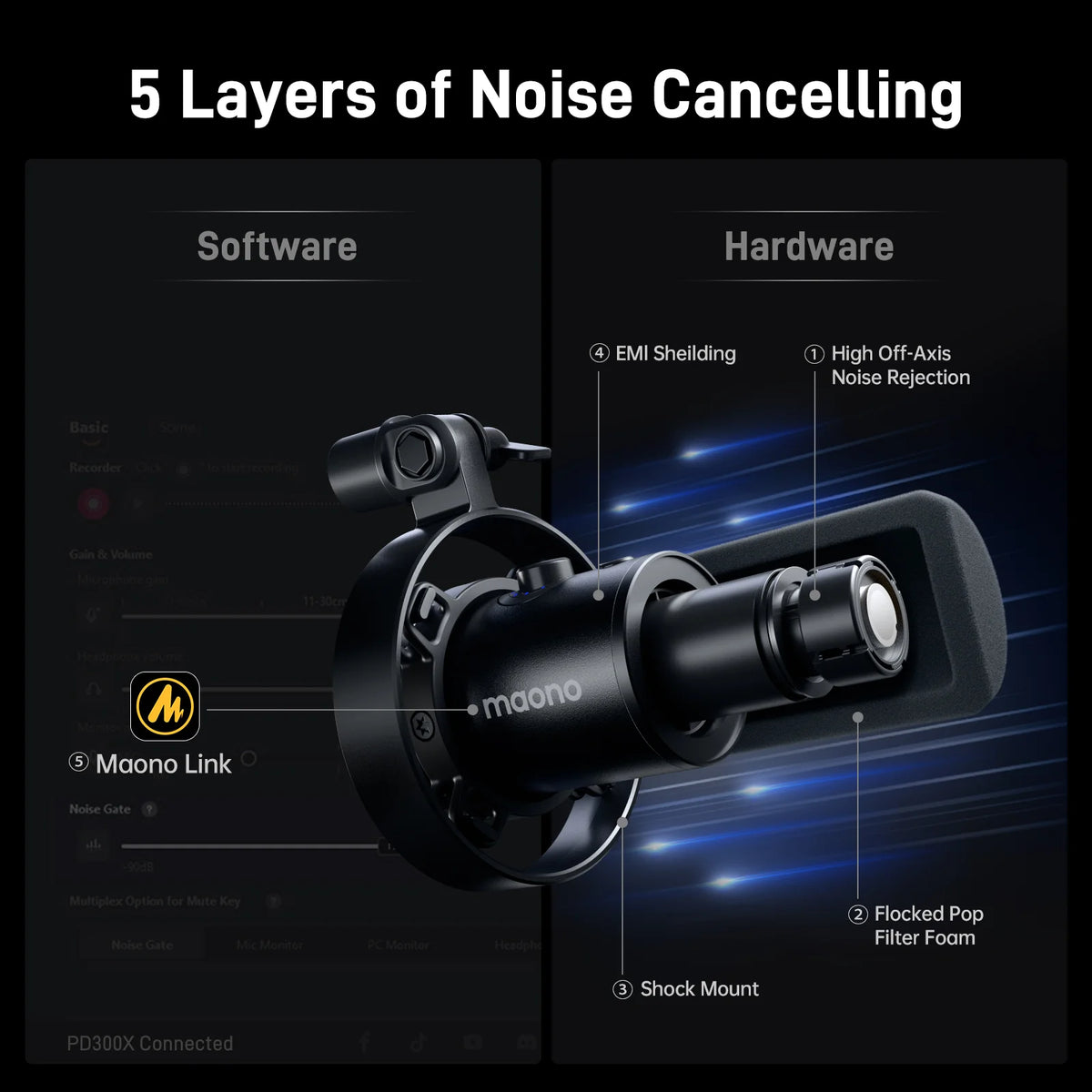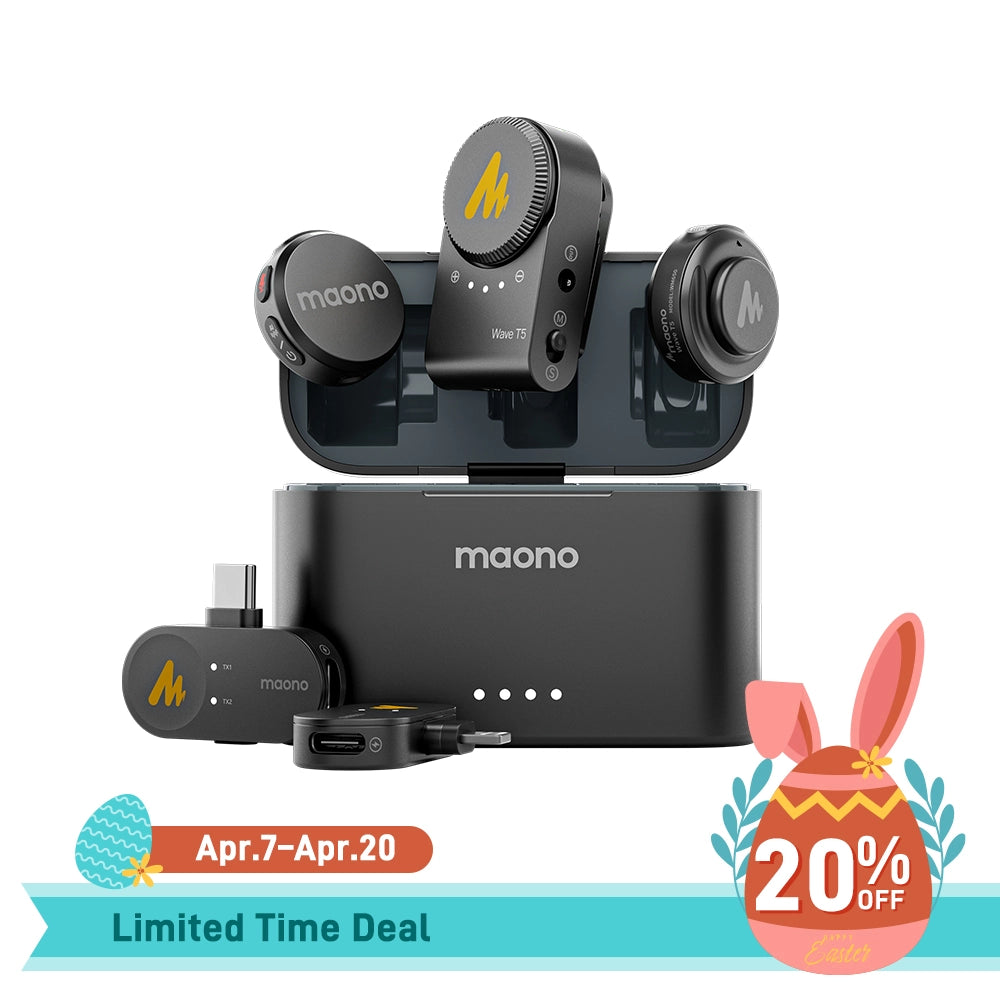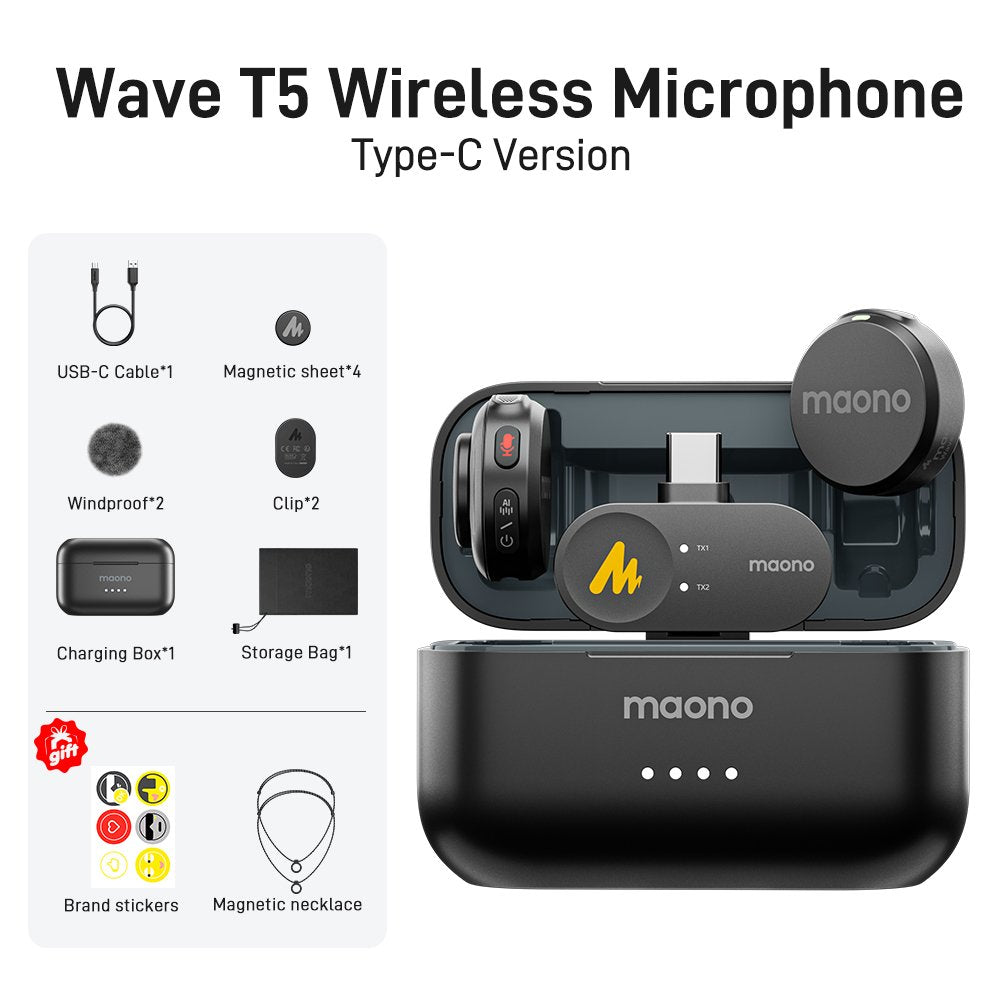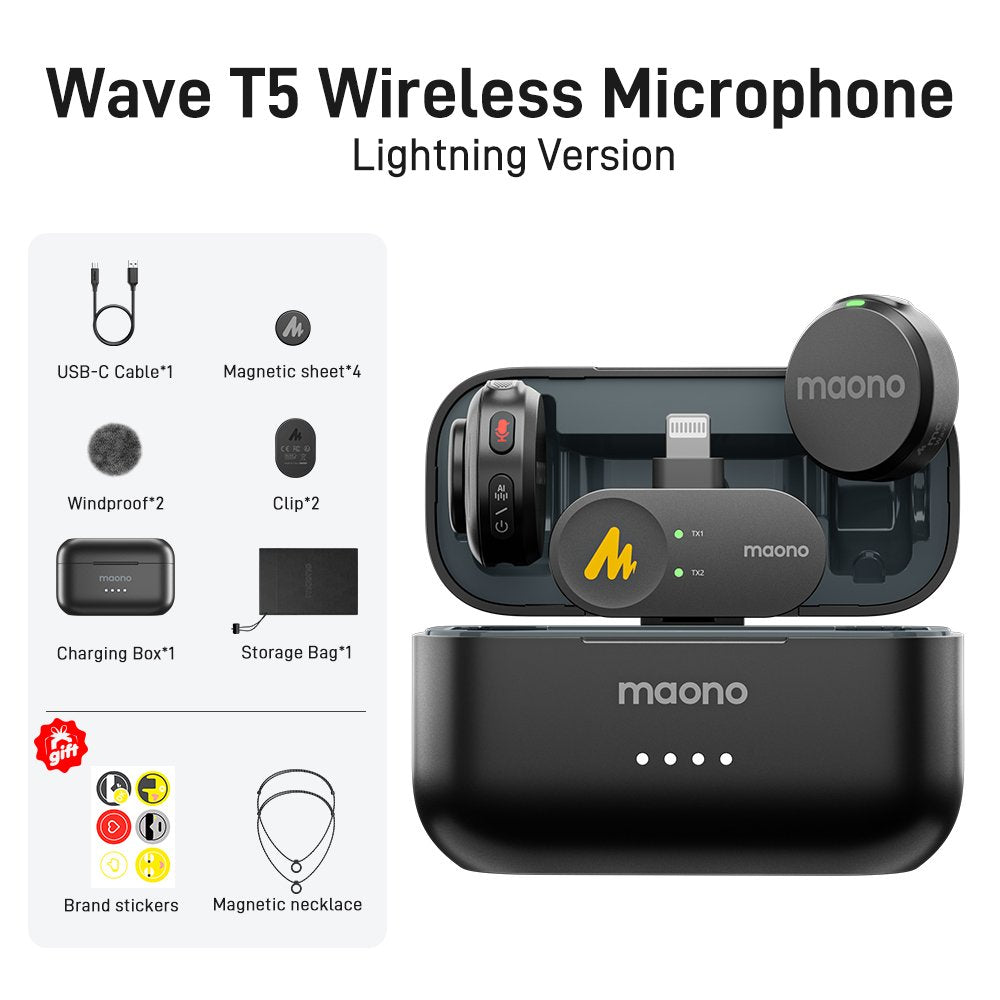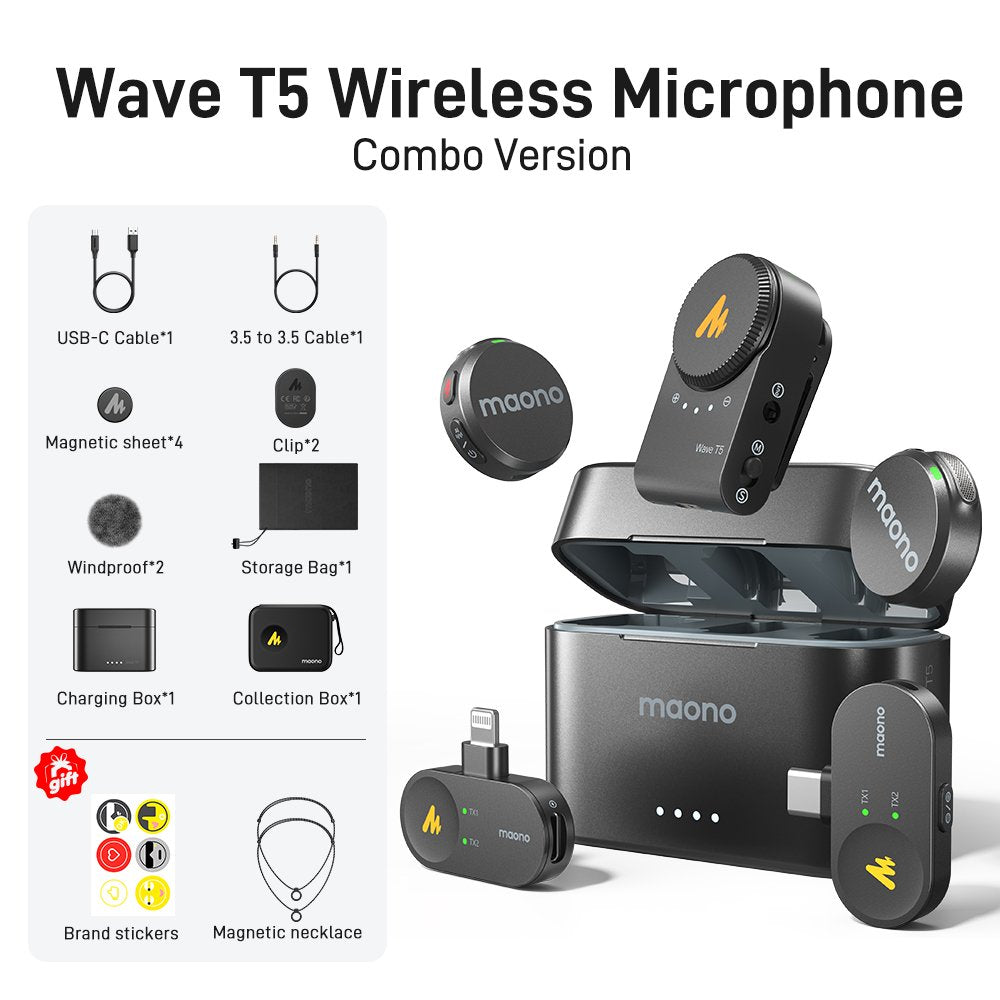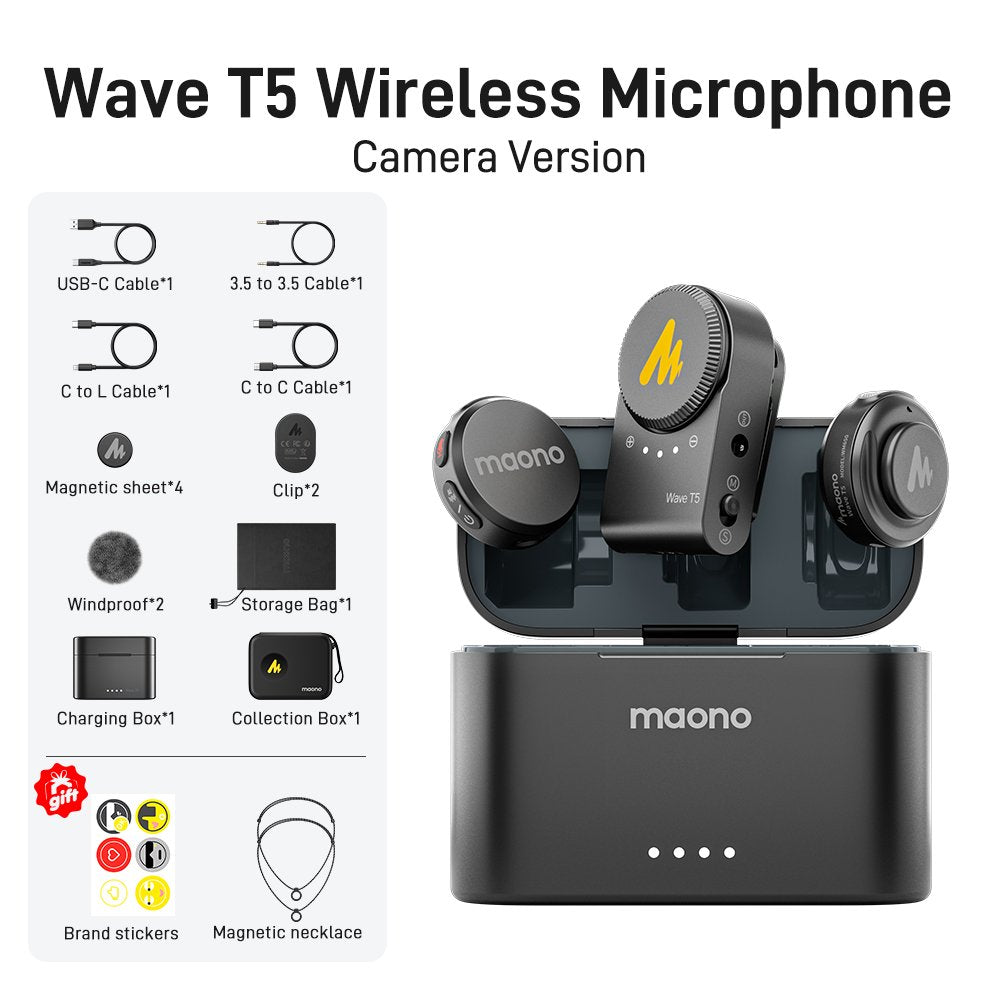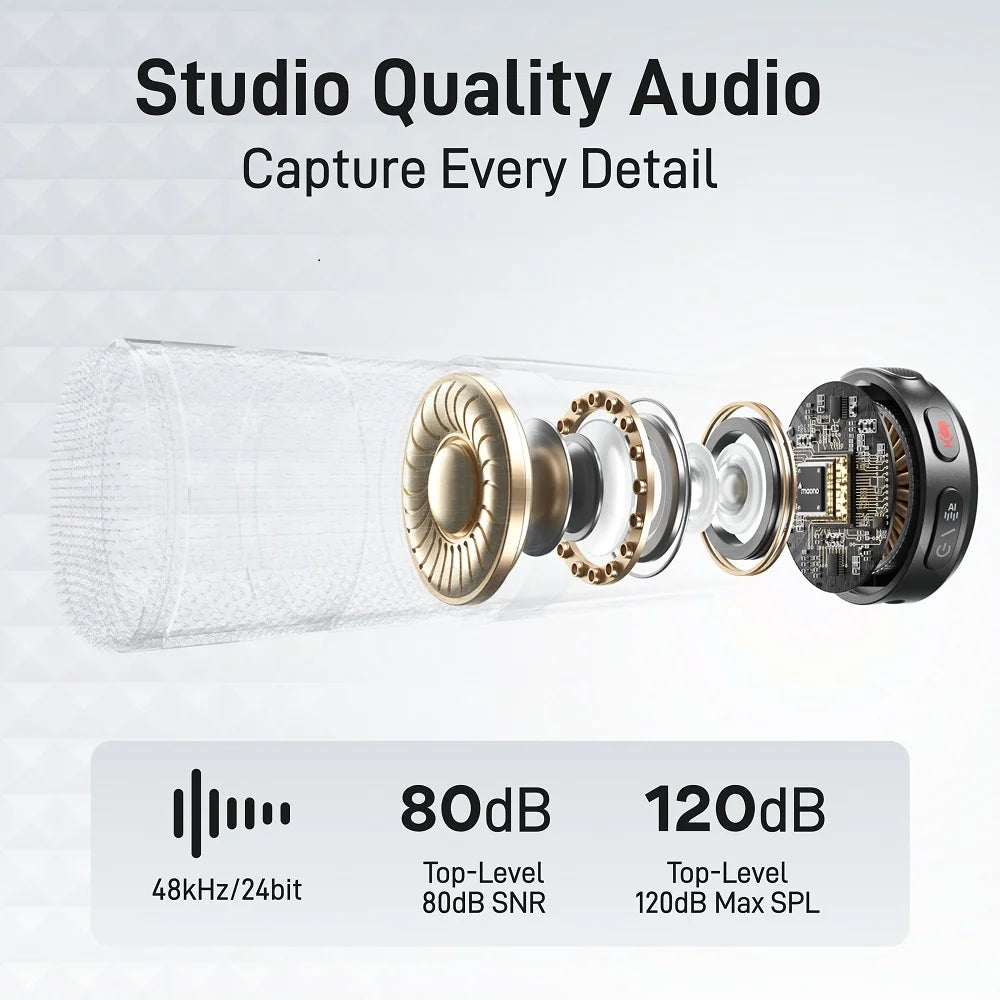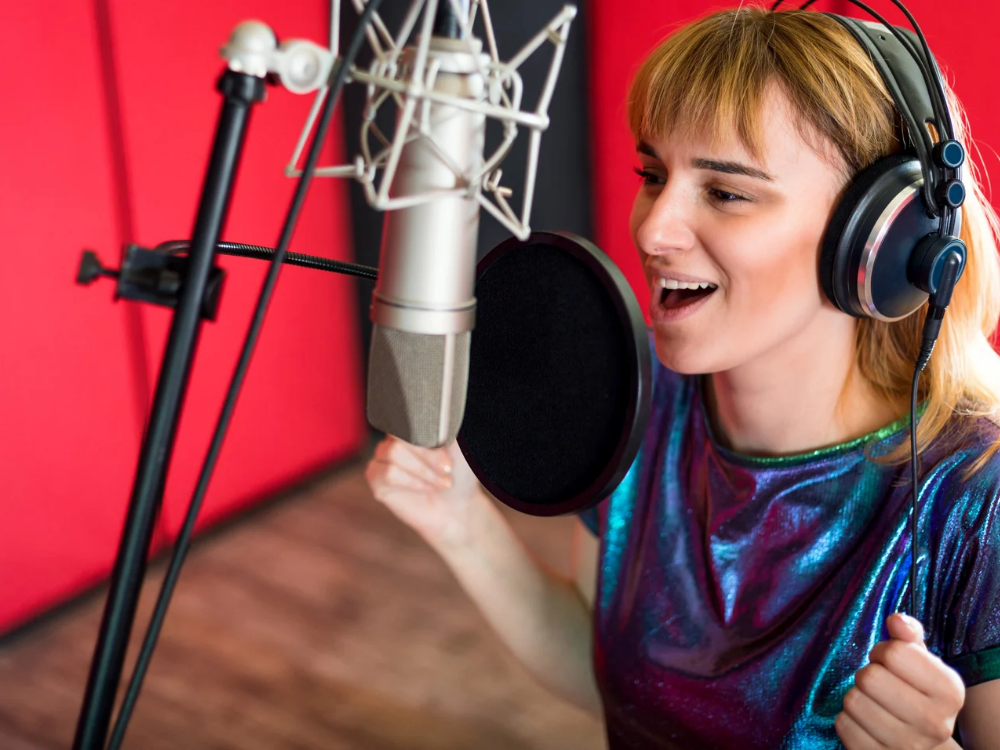The dynamic microphone is one of the major types of microphones. It is a type of microphone in which sound waves cause a movable wire or coil to vibrate in a magnetic field, thereby inducing a current. Dynamic microphones are widely used for live performances, podcasting, vocal recording, streaming, and more.
On the other hand, a condenser microphone is a type of microphone that uses a capacitor (or condenser) to convert sound waves into electrical signals. It consists of a diaphragm placed close to a backplate, forming a capacitor that varies capacitance as sound waves hit the diaphragm. This design allows for greater sensitivity and a wider frequency response, making it ideal for capturing detailed audio. In this article, we will explore the main difference between dynamic and condenser microphones and what is phantom power on a microphone.
Understanding the difference between dynamic and condenser microphones helps you choose the right mic for your specific needs. Each type has unique characteristics, such as sensitivity, durability, and sound pressure handling, which make them suitable for different applications, environments, and audio sources.
Types of Dynamic Mics
There are two main types of dynamic mic: moving coil mics and ribbon mics. Moving coil mics are the most popular and commonly used type of dynamic mic. They are sturdy, and don’t require a power source to work. Maono PD400X is an example of moving coil mics. Ribbon mics are much more delicate and have to be handled very carefully. They are able to record natural sound of instruments.
The price of moving coil mics ranges from 20 USD to 1000 USD. In comparison, the price of ribbon mics are far more expensive. Most of them are 1000 USD or up.
The sensitivity of dynamic microphones, the measure of the microphone's ability for converting acoustic pressure into an electric voltage, generally ranges from -50dB-70dB. Thus it requires 50dB-70dB gain offered by audio card or podcast studio when you are using a dynamic microphone. Otherwise, you won't be able to record with a proper audio signal output level.
Types of Condenser Mics
1. Large-Diaphragm Condenser Microphones
- Characteristics: Have a larger diaphragm that captures low frequencies and detailed sound.
- Uses: Commonly used for vocals, studio recordings, and instruments, as they provide warmth and depth.
2. Small-Diaphragm Condenser Microphones
- Characteristics: Feature a smaller diaphragm, offering a more accurate and detailed sound, especially in high frequencies.
- Uses: Ideal for recording acoustic instruments, overheads for drums, and picking up ambient sound.
3. Tube Condenser Microphones
- Characteristics: Use a vacuum tube to amplify the signal, providing a warm, vintage sound.
- Uses: Often favored in studios for vocals and instruments where a rich tone is desired.
4. FET (Field-Effect Transistor) Condenser Microphones
- Characteristics: Utilize FET circuitry for improved sensitivity and low noise.
- Uses: Versatile and suitable for a wide range of applications, including vocals and instruments.
5. Active and Passive Condenser Microphones
- Active: Require phantom power to operate and often provide a stronger output.
- Passive: Do not require external power but may have lower output levels and require preamplification.
6. Lavalier Condenser Microphones
- Characteristics: Small, clip-on mics designed for hands-free use.
- Uses: Common in film, television, and theater for capturing dialogue.
7. Shotgun Condenser Microphones
- Characteristics: Have a highly directional pickup pattern, allowing for focused sound capture from a distance.
- Uses: Often used in film production and field recording to isolate sound sources.
Dynamic Microphones vs. Condenser Microphones: A Detailed Comparison
When it comes to recording and live sound applications, both dynamic and condenser microphones have their unique strengths and weaknesses. Here’s a detailed comparison focusing on durability, SPL handling, feedback resistance, and their ideal use cases:
1. Durability
- Dynamic Microphones: Known for their rugged design, dynamic microphones are built to withstand heavy use and rough handling. Their internal structure is less sensitive to moisture and physical impact, making them ideal for live performances and outdoor events. This durability ensures that they can function well even in demanding environments.
- Condenser Microphones: While condenser mics are more sensitive and can capture nuanced sound, they are typically more fragile. Their delicate internal components, including a thin diaphragm, can be easily damaged if mishandled. They often require careful storage and transport, making them less suited for high-energy live settings.
2. SPL Handling (Sound Pressure Level)
- Dynamic Microphones: These microphones excel in handling high SPLs, which means they can capture loud sounds without distortion. This characteristic makes dynamic mics the go-to choice for miking loud sound sources such as drums, guitar amplifiers, and live vocals. They can withstand the intense sound pressure levels typical in concerts and live events.
- Condenser Microphones: Condenser microphones, while they can handle a range of SPLs, may distort or clip when exposed to very loud sounds. They are better suited for quieter sources, such as acoustic instruments or studio vocals, where capturing subtle details is essential.
3. Feedback Resistance
- Dynamic Microphones: One of the key advantages of dynamic microphones is their inherent feedback resistance. Because they are designed to pick up sound from a specific direction (often using a cardioid polar pattern), they minimize the risk of feedback when used on stage. This makes them ideal for live performances where sound systems can create challenging acoustics.
- Condenser Microphones: Condenser mics are generally more susceptible to feedback due to their sensitivity and broader pickup patterns. This can be a drawback in live settings, where controlling sound levels is critical to avoid feedback loops.
4. Ideal Use Cases for Dynamic Microphones
- Live Performances: Dynamic microphones are often the preferred choice for live sound applications due to their durability, high SPL handling, and feedback resistance. They excel in environments where sound levels fluctuate, such as concerts and public speaking events.
- Recording Environments: While they can be used in studio settings, dynamic microphones shine in untreated spaces or during high-energy performances. They can effectively capture powerful vocal performances and instruments without picking up excessive background noise, making them ideal for certain genres, such as rock and heavy metal.
Summary
Dynamic microphones are ideal for live performances and specific recording environments due to their durability, ability to handle high SPLs, and resistance to feedback. While condenser microphones have their place in capturing subtle sounds and intricate details, dynamic microphones offer the reliability and robustness needed in demanding audio scenarios. Whether you're a live performer or a studio engineer, understanding the strengths of dynamic microphones can help you make informed choices for your audio needs.
Comparison Chart between Dynamic Microphones and Condenser Microphones

What is Phantom Power for Microphones?
Phantom power is a method used to supply power to certain types of microphones, particularly condenser microphones, through the same cable that carries the audio signal. This power is necessary for microphones that contain active circuitry, allowing them to function properly.
How Phantom Power Works
Phantom power typically operates at a standard voltage of 48 volts, though some devices may use lower voltages (like 12V or 24V). Here’s how it functions:
1. Balanced Audio Cables: Phantom power is delivered via balanced audio cables (XLR cables) that have three pins: one for the ground, one for the positive voltage, and one for the audio signal.
2. Voltage Delivery: The power is applied equally to both the positive and negative signal wires, maintaining a balanced audio signal. This means that the microphone can receive power without introducing noise or interference.
3. Active Circuitry: In condenser microphones, the power is used to charge the capacitor (which forms the microphone's diaphragm) and to power any internal preamplifiers. This active circuitry is crucial for converting sound waves into electrical signals efficiently.
Practical Applications:
Phantom power is commonly used in various recording setups, particularly when using condenser microphones. Here are some specific scenarios where phantom power is essential:
1. Studio Recording
- Vocal Recording: In professional studios, condenser microphones are frequently used for recording vocals due to their sensitivity and clarity. Phantom power is supplied to ensure the microphone’s internal circuitry operates optimally, capturing every nuance of the voice.
- Instrument Tracking: Many instruments, such as acoustic guitars and strings, benefit from the detail that condenser mics provide. Phantom power enables these mics to deliver high-quality audio, making them ideal for capturing the subtleties of the performance.
2. Live Sound
- Concerts and Performances: In live sound settings, condenser microphones are often used for vocals and overheads in drum kits. Phantom power is supplied through mixing consoles, ensuring that these mics perform reliably in dynamic environments, capturing sound with precision and clarity.
- On-Stage Instrumentation: Musicians using acoustic instruments or electronic keyboards with condenser mics rely on phantom power to achieve the best sound quality during performances, allowing for clear and detailed audio in large venues.
3. Podcasting and Broadcasting
- High-Quality Audio Capture: Podcasters and broadcasters often use condenser microphones for their superior audio quality. Phantom power is essential for these setups, as it allows the microphones to function correctly, ensuring that voices are recorded clearly and professionally.
- Interviews and Discussions: In scenarios where multiple speakers are involved, such as interviews or panel discussions, using condenser mics with phantom power helps maintain consistent audio quality, providing listeners with an engaging and clear experience.
Phantom power is vital in various recording scenarios, including studio recording, live sound, and podcasting. It enables condenser microphones to perform at their best, ensuring high-quality audio capture that meets the demands of professional environments. Without phantom power, many of these microphones would not operate, significantly affecting the overall sound quality.
Why Condenser Microphones Need Phantom Power
1. Sensitivity and Sound Quality: Condenser microphones are typically more sensitive and provide a wider frequency response than dynamic microphones. Phantom power is essential for these characteristics, allowing them to capture subtle nuances in sound.
2. Preamplification: The internal preamps in condenser mics require power to boost the weak audio signal produced by the diaphragm. Without phantom power, these microphones would not function optimally and might produce a low or unusable output level.
3. Versatility: Many audio interfaces, mixers, and recording devices come with built-in phantom power options, making it convenient to use condenser microphones in various settings, from studios to live performances.
4. Noise Reduction: Since phantom power is supplied through balanced cables, it helps reduce the risk of noise and interference in the audio signal, resulting in cleaner recordings.
In summary, phantom power is crucial for the operation of condenser microphones, enabling them to perform at their best by providing the necessary power for their internal electronics. Understanding phantom power is essential for anyone working with audio equipment, as it ensures that microphones operate effectively and deliver high-quality sound.
Frequently Asked Questions
There are some frequently asked questions about dynamic microphones. We list answers below for your reference, hopefully, they will help you to figure out some of your doubts.
Q1: What is the main difference between dynamic and condenser microphones?
Answer: Dynamic microphones and condenser microphones convert sounds differently. Condenser microphones make use of a capacitor to transform sound waves into electric signals. They are widely used for podcasting, recording, gaming, streaming, film production, etc. Dynamic microphones make use of an electromagnetic field to produce an electric signal. When sound shakes the diaphragm, the coil vibrates and also generates an electric signal.
For more information, you can also read this article.

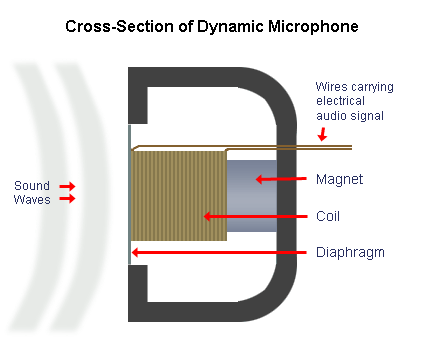
The features of dynamic microphones are that they are robust, require no power supply, less sensitive. Dynamic microphones don't need a power supply to work while condenser microphones require power supply, phantom power or bias power supply. Phantom power is a direct current sent down a microphone cable in order to activate active electronic circuitry. This current is used to apply a charge to a small metal plate which will make the diaphragm move, making the microphone move.
Q2: What is a dynamic mic good for? What are the best situations where dynamic microphones excel?
Answer: Dynamic microphones are frequently used during performances on live stages, events, and voice applications like podcasting. The robust design of dynamic microphones made them durable and last longer. Dynamic microphones are ideal for vocal applications for their low-sensitivity. A dynamic microphone with cardioid polar pattern is great for audio recording in loud places like Live stage, outdoor performance, etc. Streaming with a dynamic microphone can also be a good choice if you find the mouse, keyboard clicking noises annoying. What's more, using a dynamic microphone for podcasting helps you to record natural and smooth voice.
Q3: Do Dynamic Microphones Need Phantom Power?
Answer: No, dynamic microphones doesn't need phantom power because they generally don't contain active circuitry. While applying phantom power to a dynamic microphone will not cause any damage to the equipment. However, you will get a little bit more output noise.
Phantom power plays a critical role in the functioning of condenser microphones but is largely irrelevant for dynamic microphones. Here’s a breakdown of the differences in relevance between the two types of microphones:
Dynamic Microphones
- No Power Requirement: Dynamic microphones operate based on electromagnetic principles. They contain a diaphragm attached to a coil of wire that moves within a magnetic field, generating an electrical signal. Because of this passive design, dynamic microphones do not require any external power source, including phantom power.
- Simplicity and Durability: The lack of need for phantom power makes dynamic microphones straightforward to use and more robust in various environments, such as live performances where power sources may be limited.
- Usage Scenarios: Dynamic mics are often used for applications like live sound reinforcement, vocal performances, and instruments where durability and feedback rejection are essential. Since they don’t rely on phantom power, they can be connected directly to mixers and audio interfaces without any additional setup.
Condenser Microphones
- Dependence on Phantom Power: Condenser microphones, in contrast, require phantom power to operate effectively. They have active electronic components, such as a capacitor that needs to be charged and preamps that amplify the audio signal. This power is essential for the microphone to capture sound accurately.
- Enhanced Sensitivity and Sound Quality: The use of phantom power allows condenser microphones to be more sensitive and capable of capturing a wider frequency range and subtle nuances in sound, making them ideal for studio recording and applications where audio quality is paramount.
- Typical Usage: You’ll find condenser mics commonly used in studio settings, for vocals, acoustic instruments, and in broadcasting, where high fidelity is critical. Without phantom power, these microphones would not function, resulting in low output or no audio signal at all.
Summary
In summary, phantom power is crucial for the operation of condenser microphones but not needed for dynamic microphones. Understanding this distinction helps users choose the appropriate microphone for their needs, ensuring they have the right setup to achieve optimal sound quality in various recording or performance situations.
Q4. Dynamic microphone vs condenser, is a dynamic mic better for vocals?
Answer: Both condenser microphones and dynamic microphones can produce quality audio and be used for voice applications. For example, one of Maono’s condenser microphones, Maono PM500 XLR Condenser Microphone, is capable of recording high-quality voice audio.
However, since dynamic microphones are less sensitive than condenser microphones, recording with a dynamic microphone means more focus on voices while rejecting noises. In this way, maybe it is partially true that a dynamic mic is better for vocals.
Q5. What types of projects benefit from a condenser mic?
- Condenser microphones are particularly beneficial for:
- Studio recordings of vocals and instruments
- Podcasts and voiceovers
- Acoustic performances
- Field recordings and interviews
- Any project requiring detailed sound capture and clarity
Q6. Are there specific brands or models recommended for beginners?
Yes, some beginner-friendly condenser microphone models include:
Audio-Technica AT2020: Known for its affordability and quality.
Rode NT1-A: Excellent for vocals with low self-noise.
MXL 990: A versatile and budget-friendly option for various recording scenarios. These models provide a good balance of performance and price, making them suitable for those just starting out.
Maono A04: A USB condenser microphone that features excellent sound capture and professional-sound quality, ideal for podcasting and content creation.
What is a Condenser Microphone Used for?
Condenser microphones are commonly used in studio recording, live performances, podcasts, and broadcasting. Their sensitivity makes them excellent for capturing vocals, acoustic instruments, and subtle nuances in sound, making them a preferred choice for high-fidelity recordings.
A Guide to Choosing the Best Microphone: Studio vs. Live Performance
1. Purpose and Environment:
- Studio Recording: If you're recording vocals or instruments in a controlled environment, a condenser microphone is often the best choice. They capture a wider frequency range and provide greater sensitivity to nuances.
- Live Performance: For live settings, consider a dynamic microphone. They are more durable and resistant to feedback, making them ideal for loud environments.
2. Sound Quality:
- Studio: Look for microphones with flat frequency response for natural sound capture. Brands like Audio-Technica and Neumann offer excellent studio microphones.
- Live: Choose microphones with built-in EQ to enhance vocal clarity in a live mix. Shure SM58 is a classic example known for its reliability.
3. Durability:
- Studio: While durability is important, the primary focus should be on sound quality and sensitivity.
- Live: Opt for robust models that can withstand drops and rough handling, which is typical in live settings.
4. Budget:
- Studio: High-quality condenser mics can range from moderate to high prices. Investing in a good mic can significantly improve your recordings.
- Live: Dynamic microphones are generally more affordable and provide excellent value for their performance in live situations.
5. Connectivity:
- Studio: Ensure you have the necessary audio interface or mixer that supports phantom power for condenser mics.
- Live: XLR connections are standard for dynamic mics, making them easy to set up with PA systems.
Consider your specific needs—whether studio or live performance—and choose a microphone that aligns with those requirements. Testing different microphones can also help you find the right fit for your sound.
What are the best dynamic microphones for podcasts?
Maono PD400X Dynamic XLR/USB Microphone
Maono PD400X is a great dynamic microphone for podcasting and streaming. As Maono’s best dynamic microphone, the PD400X has won many good comments from users.
RECOMMENDED VIDEO:
To deliver a ultimate recording experience to users, Maono packed its latest and greatest innovation on hardware as well as software to Maono PD400X Cardioid Dynamic Microphone. Maono PD400X’s dual connectivities design offers great conveniences to creators who want to use it both on a PC/Mac or on traditional audio mixer/interface. Also it saves the initial investments in gears for vloggers, streamers, and podcasters who need flexible setups. The microphone fits 3/8-inch and 5/8-inch threaded podcasting setups, which means the microphone will suit almost all of the setups of podcasters, gamers or other content creators.
As a dynamic microphone with tight cardioid polar pattern, Maono PD400 podcaster mic focuses on your voice while rejecting noises of loud hums of computer, air conditioner, and other ambient sounds. The clear raw audio Maono PD400 records will save them a lot of time of post-editing.
There is a 3-in-1 knob offering mic gain, headphone volume, monitor mix control functions. Tap-to-mute features is applied to Maono 400X, which means by tapping the knob, you can easily will mute microphone. The companion software Maono Link adds more capacity to Maono PD400X, allowing you to fine tune your vocal easily and show fantastic custom recording to audience. There are many advanced features to fully unlock the hardware potential of Maono PD400X. Such as EQ options, limiter, and compressor to satisfy a specific need.
To find out more details about the Maono Link Software, you can read our previous blog about it, Maono Link Brings Advanced Audio Processing Features to PD400X.
What are the Best Condenser Microphones for Podcasts?
Here are the top 5 best condenser microphones for podcasts:
1. Audio-Technica AT2020
- Overview: A versatile and affordable large-diaphragm condenser microphone.
- Features: Cardioid pattern, wide frequency response, and high SPL handling.
- Uses: Excellent for vocal recording, ideal for podcasting and home studio setups.
2. Rode NT1-A
- Overview: Known for its low self-noise and clarity, making it a favorite among podcasters.
- Features: Comes with a shock mount, pop filter, and high sensitivity.
- Uses: Perfect for capturing detailed vocals and instruments in studio environments.
3. Blue Yeti
- Overview: A highly popular USB microphone with multiple pickup patterns.
- Features: Cardioid, omnidirectional, bidirectional, and stereo modes for versatile recording.
- Uses: Great for solo podcasts, interviews, and group discussions with easy USB connectivity.
4. Maono A04
- Overview: A budget-friendly condenser microphone kit suitable for podcasting.
- Features: Includes a pop filter, shock mount, and boom arm, with a cardioid pickup pattern.
- Uses: Ideal for beginners and home podcasters looking for quality and convenience.
5. Rode NT-USB
- Overview: A USB condenser microphone that delivers excellent sound quality.
- Features: Built-in pop shield, zero-latency monitoring, and durable construction.
- Uses: Ideal for podcasters who prefer a straightforward setup with high-quality audio.
Related Readings:
Optimize YouTube Success: USB Dynamic Microphone Tips for Streaming
Dynamic vs. Condenser Mic: Which One to Use
Dynamic Cardioid Mic vs Condenser Mic: Picking the Right One



